NASA announced the electric plane X-57 Maxwell
 Bashny.Net
Bashny.Net
Fifty five million four hundred sixty two thousand three hundred twelve
Series XSeries experimental aircraft X started with X-1, developed by Bell Aircraft in 1946 — the first aircraft with a rocket engine (made by Reaction Motors) and the first airplane in aviation history to break the sound barrier. This occurred on 14 October 1947.
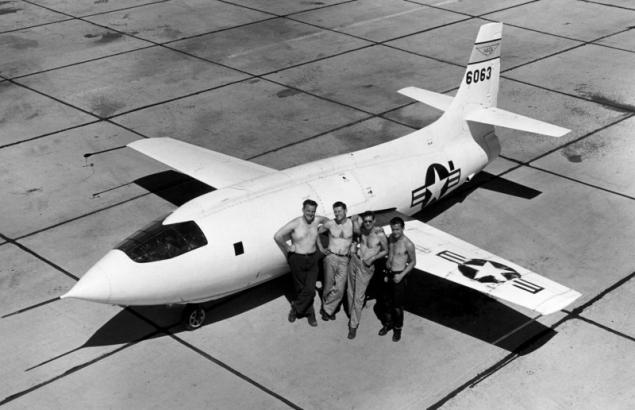
Bell X-1 first plane to break the sound barrier. Photo: NASA
The Bell X-1 was a cantilever all-metal monoplane with an unusual straight wing with cut ends and the relative thickness of 8%. To reduce the vibration at the time of overcoming the sound barrier and supersonic speeds to aircraft designed special dampers (shock absorbers) to mitigate fluctuations.

The motor Reaction Motors XRL-11 for aircraft X-1. Photo: USAF. Photo: NASA
On the X series models have traditionally experienced promising technology. Some of them were specially designed for the U.S. army and a long time was kept secret. For example, the fact that X-1 for the first time in history reached supersonic speed, announced only eight months later.
Over the past half century in the X series developed by dozens of different experimental models of aircraft of all shapes, sizes and purposes, as well as several missiles. Another famous representative of this legendary series was the rocket plane X-15 — the first in over 40 years only in the history of manned hypersonic aircraft-the plane, a suborbital manned space flights.
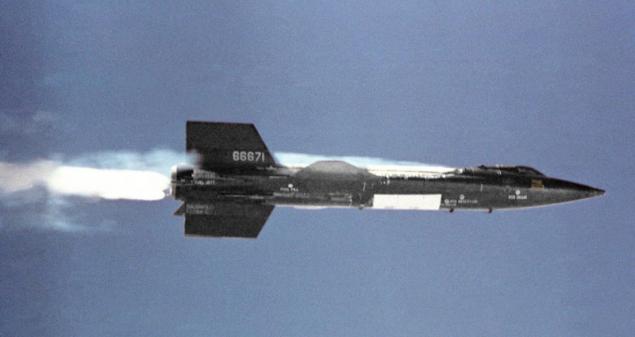
X-15
Mounted X-15 altitude record 107,96 km lasted from 1963 to 2004.
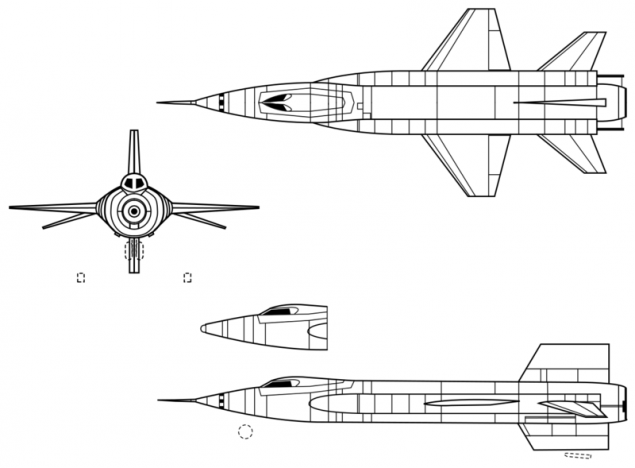
Diagram Of The X-15
The latest in a series of experimental aircraft, NASA began the X-56 is a modular unmanned aerial vehicle, which was to test the possibility of long-term exploration at high altitudes (High-Altitude Long Endurance, HALE). The first test flight of the X-56 was made on 26 July 2013.
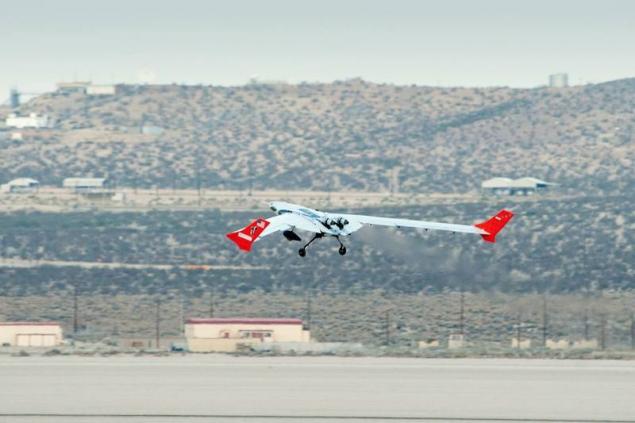
X-56
In recent years, American aeronautical engineer took a small break from the X-56 experimental X-series, not a single model, and only the NASA had not designed any new aircraft X series for ten years.
Remade ItalianFinally 17 June 2016 this is a kind of engineering "embargo" has been violated by the administrator of NASA Charles Bolden (Charles Bolden), who spoke Friday at the annual forum of the American Institute of Aeronautics and Astronautics in Washington. He officially announced a new model X series: it will be an electric plane X-57, codenamed Maxwell.
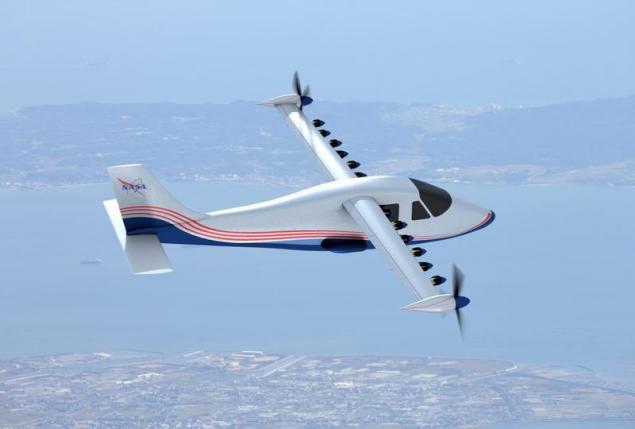
X-57
The plane X-wings 57 is of an unusual design and is driven 14 propeller motors. The development of this model is in the framework of the project SCEPTOR (Scalable Convergent Electric Propulsion Technology Operations Research) pprogramme the development of electric motors in the Flight research center. Armstrong.
NASA engineers are going to release the prototype X-57 by modification of newly purchased light Italian twin-engine aircraft Tecnam P2006T.
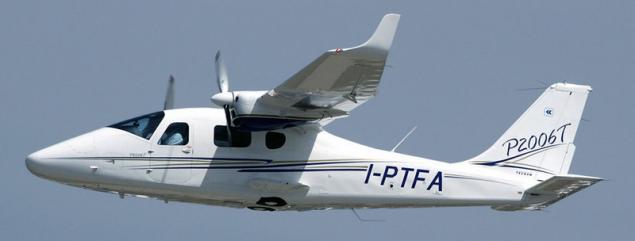
Tecnam P2006T
This economical four-seater consumes just 34 liters of fuel per hour, with a top speed of 287 km/h.
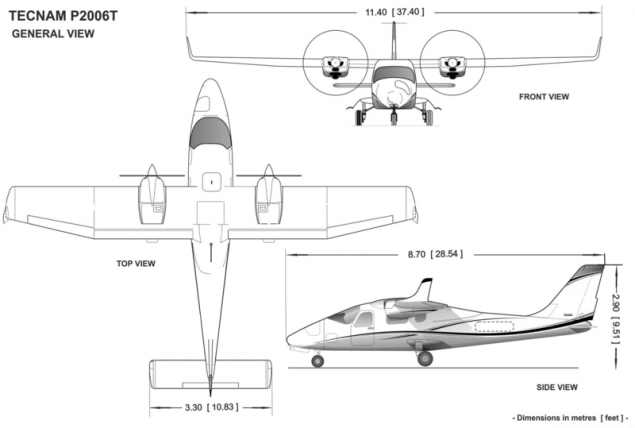
Scheme Tecnam P2006T
Instead of two piston engines Tecnam P2006T in the American experimental models X-57 install 14 propeller motors that run on electricity. Of these, 12 screws on the front edge of the wing are activated only during acceleration, separation and landing and two large screws at the edges of the wings are designed to move at cruising speed.
A new era in aviation,As in the case of saddle electrotractor Nikola Motor, the main reason for the refusal of diesel fuel in favour of electric propulsion called the reduction in operating costs. Simply put, the motors are much cheaper to operate and more efficient.
Developers from NASA believe that the distribution of electricity between the built-in wings, propeller engines would lead to a fivefold decrease of energy during the flight of a private jet at a cruising speed of 280 km/h. as a result, overall operating costs for small aircraft will be reduced by 40% while maintaining high speeds. If earlier to save fuel, the aircraft had to fly at lower speeds, the electric motors eliminate this restriction, stated in a press release NASA.
In addition, electroanalyt on batteries will reduce emissions of harmful substances into the atmosphere, compared to conventional engines. In particular, the transition to these aircraft will significantly reduce the consumption of aviation fuel containing additives based on lead, which is still widely used in civil aviation.
"With the return of manned aircraft, the X-series in the scope of research opportunities, NASA — which is a key part of our 10-year initiative to reach new horizons in aviation — development of the plane X-57 is the first step to the beginning of a new era in aviation," — said the head of NASA Charles Bolden".It looks like the future of ground transportation — for electric unmanned cars and freight wagons, and the future of aviation belongs to electric aircraft. At least, so says NASA.
New aircraft X-57 named Maxwell in honor of the 19th century the Scottish physicist James Clerk Maxwell, who published a revolutionary scientific work on electromagnetism and, together with the Lorentz laid the foundations of classical electrodynamics (Maxwell – Lorentz). published
P. S. And remember, only by changing their consumption — together we change the world! ©
Source: geektimes.ru/post/277472/
Series XSeries experimental aircraft X started with X-1, developed by Bell Aircraft in 1946 — the first aircraft with a rocket engine (made by Reaction Motors) and the first airplane in aviation history to break the sound barrier. This occurred on 14 October 1947.

Bell X-1 first plane to break the sound barrier. Photo: NASA
The Bell X-1 was a cantilever all-metal monoplane with an unusual straight wing with cut ends and the relative thickness of 8%. To reduce the vibration at the time of overcoming the sound barrier and supersonic speeds to aircraft designed special dampers (shock absorbers) to mitigate fluctuations.

The motor Reaction Motors XRL-11 for aircraft X-1. Photo: USAF. Photo: NASA
On the X series models have traditionally experienced promising technology. Some of them were specially designed for the U.S. army and a long time was kept secret. For example, the fact that X-1 for the first time in history reached supersonic speed, announced only eight months later.
Over the past half century in the X series developed by dozens of different experimental models of aircraft of all shapes, sizes and purposes, as well as several missiles. Another famous representative of this legendary series was the rocket plane X-15 — the first in over 40 years only in the history of manned hypersonic aircraft-the plane, a suborbital manned space flights.

X-15
Mounted X-15 altitude record 107,96 km lasted from 1963 to 2004.

Diagram Of The X-15
The latest in a series of experimental aircraft, NASA began the X-56 is a modular unmanned aerial vehicle, which was to test the possibility of long-term exploration at high altitudes (High-Altitude Long Endurance, HALE). The first test flight of the X-56 was made on 26 July 2013.

X-56
In recent years, American aeronautical engineer took a small break from the X-56 experimental X-series, not a single model, and only the NASA had not designed any new aircraft X series for ten years.
Remade ItalianFinally 17 June 2016 this is a kind of engineering "embargo" has been violated by the administrator of NASA Charles Bolden (Charles Bolden), who spoke Friday at the annual forum of the American Institute of Aeronautics and Astronautics in Washington. He officially announced a new model X series: it will be an electric plane X-57, codenamed Maxwell.

X-57
The plane X-wings 57 is of an unusual design and is driven 14 propeller motors. The development of this model is in the framework of the project SCEPTOR (Scalable Convergent Electric Propulsion Technology Operations Research) pprogramme the development of electric motors in the Flight research center. Armstrong.
NASA engineers are going to release the prototype X-57 by modification of newly purchased light Italian twin-engine aircraft Tecnam P2006T.

Tecnam P2006T
This economical four-seater consumes just 34 liters of fuel per hour, with a top speed of 287 km/h.

Scheme Tecnam P2006T
Instead of two piston engines Tecnam P2006T in the American experimental models X-57 install 14 propeller motors that run on electricity. Of these, 12 screws on the front edge of the wing are activated only during acceleration, separation and landing and two large screws at the edges of the wings are designed to move at cruising speed.
A new era in aviation,As in the case of saddle electrotractor Nikola Motor, the main reason for the refusal of diesel fuel in favour of electric propulsion called the reduction in operating costs. Simply put, the motors are much cheaper to operate and more efficient.
Developers from NASA believe that the distribution of electricity between the built-in wings, propeller engines would lead to a fivefold decrease of energy during the flight of a private jet at a cruising speed of 280 km/h. as a result, overall operating costs for small aircraft will be reduced by 40% while maintaining high speeds. If earlier to save fuel, the aircraft had to fly at lower speeds, the electric motors eliminate this restriction, stated in a press release NASA.
In addition, electroanalyt on batteries will reduce emissions of harmful substances into the atmosphere, compared to conventional engines. In particular, the transition to these aircraft will significantly reduce the consumption of aviation fuel containing additives based on lead, which is still widely used in civil aviation.
"With the return of manned aircraft, the X-series in the scope of research opportunities, NASA — which is a key part of our 10-year initiative to reach new horizons in aviation — development of the plane X-57 is the first step to the beginning of a new era in aviation," — said the head of NASA Charles Bolden".It looks like the future of ground transportation — for electric unmanned cars and freight wagons, and the future of aviation belongs to electric aircraft. At least, so says NASA.
New aircraft X-57 named Maxwell in honor of the 19th century the Scottish physicist James Clerk Maxwell, who published a revolutionary scientific work on electromagnetism and, together with the Lorentz laid the foundations of classical electrodynamics (Maxwell – Lorentz). published
P. S. And remember, only by changing their consumption — together we change the world! ©
Source: geektimes.ru/post/277472/
Tags
See also
The new aircraft Boeing
7 inventions that can change the world
Seven inventions that could change the world beyond recognition
The strangest aircraft in the history of aviation (27 photos)
Storming the sound barrier
MiGs. Famous and not so
Who we lost this year (18 photos)
Famous and well-known people, who did not in 2012
100 years of Russian aviation photo
Come smoke machine?

















